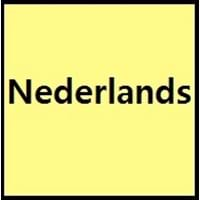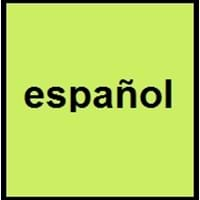Countries
Aruba, Belgium, Curacao, Netherlands, Sint Maarten, Suriname
Andora, Argentina, Aruba, Australia, Belize, Bolivia, Brazil, Canada, Chile, Colombia, Costa Rica, Cuba, Dominican Republic, Ecuador, El Salvador, Equatorial Guinea, France, Gibraltar, Guatemala, Honduras, Jamaica, Latvia, Luxembourg, Mexico, Morocco, Namibia, Netherlands Antilles, New Zealand, Nicaragua, Norway, Panama, Paraguay, Peru, Philippines, Puerto Rico, Russia, Spain, Sweden, Switzerland, Trinidad and Tobago, Turkey, United Kingdom, United States of America, Uruguay, Venezuela, Western Sahara
National Language
Aruba, Belgium, Curacao, Netherlands, Sint Maarten, Suriname
Spain
Second Language
South Africa
Andora, Aruba, Australia, Austria, Belgium, Belize, Brazil, Bulgaria, Canada, Denmark, France, Germany, Ireland, Israel, Italy, Jamaica, Luxembourg, Morocco, Netherlands, Netherlands Antilles, New Zealand, Philippines, Poland, Portugal, Romania, Russia, Slovenia, Switzerland, Trinidad and Tobago, Turkey, United Kingdom, United States of America, US Virgin Islands
Speaking Continents
Asia, Europe, North America, South America
Africa, Asia, Europe, North America, South America
Minority Language
France, Germany, Indonesia
Brazil, France, Germany, Italy, Japan, Morocco, United Kingdom
Regulated By
Nederlandse Taalunie (Dutch Language Union)
Asociación de Academias de la Lengua Española
Interesting Facts
- Dutch language consist of extremely long words. The longest dutch word in the dictionary is 53 letters long.
- There exists 75% borrowed words in Dutch language, and a lot of those are French, English and Hebrew.
- One of the world's most phonetic language is Spanish.
- Up to the 18th century, Spanish was diplomatic language.
Similar To
German and English Languages
French Language
Derived From
Not Available
Latin
Alphabets in
Dutch-Alphabets.jpg#200
Spanish-Alphabets.jpg#200
Writing Direction
Left-To-Right, Horizontal
Left-To-Right, Horizontal
Thank You
dankjewel
Gracias
How Are You?
hoe gaat het met je?
Cómo estás?
Good Night
goede Nacht
Buenas Noches
Good Evening
goedenavond
Bonne soirée
Good Afternoon
goedemiddag
Buenas Tardes
Good Morning
goedemorgen
Buenos Días
Please
alsjeblieft
Por Favor
I Love You
Ik hou van jou
Te Quiero
Excuse Me
pardon
Discúlpeme
Dialect 1
Gronings
Mexican Spanish
Where They Speak
Netherlands
Mexico
Dialect 2
Low Saxon
Cuban Spanish
Where They Speak
Denmark, Germany, Netherlands
Cuba
Dialect 3
Limburgian
Puerto Rican Spanish
Where They Speak
Belgium, Netherlands
Puerto Rico
Native Name
Nederlands
Español
Alternative Names
Hollands, Nederlands
Castellano, Castilian, Español
French Name
néerlandais; flamand
espagnol; castillan
German Name
Niederländisch
Spanisch
Pronunciation
[ˈneːdərlɑnts]
[espaˈɲol], [kasteˈʎano]
Ethnicity
Dutch people
Not Available
Language Family
Indo-European Family
Indo-European Family
Subgroup
Germanic
Romance
Branch
Western
Not Available
Early Forms
Old Dutch, Middle Dutch and Dutch
Old Spanish and Spanish
Standard Forms
Standard Dutch
Pluricentric Standard Spanish
Signed Forms
Signed Dutch (Nederlands met Gebaren)
Signed Spanish
Scope
Individual
Individual
ISO 639 6
Not Available
Not Available
Glottocode
mode1257
stan1288
Linguasphere
52-ACB-a
51-AAA-b
Language Type
Historical
Living
Language Linguistic Typology
Subject-Object-Verb
Subject-Object-Verb
Language Morphological Typology
Synthetic
Fusional, Synthetic
Dutch and Spanish Greetings
People around the world use different languages to interact with each other. Even if we cannot communicate fluently in any language, it will always be beneficial to know about some of the common greetings or phrases from that language. This is where Dutch and Spanish greetings helps you to understand basic phrases in Dutch and Spanish language. Dutch word for "Hello" is Hallo or Spanish word for "Thank You" is Gracias. Find more of such common Dutch Greetings and Spanish Greetings. These greetings will help you to be more confident when conversing with natives that speak these languages.
Dutch vs Spanish Difficulty
The Dutch vs Spanish difficulty level basically depends on the number of Dutch Alphabets and Spanish Alphabets. Also the number of vowels and consonants in the language plays an important role in deciding the difficulty level of that language. The important points to be considered when we compare Dutch and Spanish are the origin, speaking countries, language family, different greetings, speaking population of these languages. Want to know in Dutch and Spanish, which language is harder to learn? Time required to learn Dutch is 24 weeks while to learn Spanish time required is 24 weeks.





